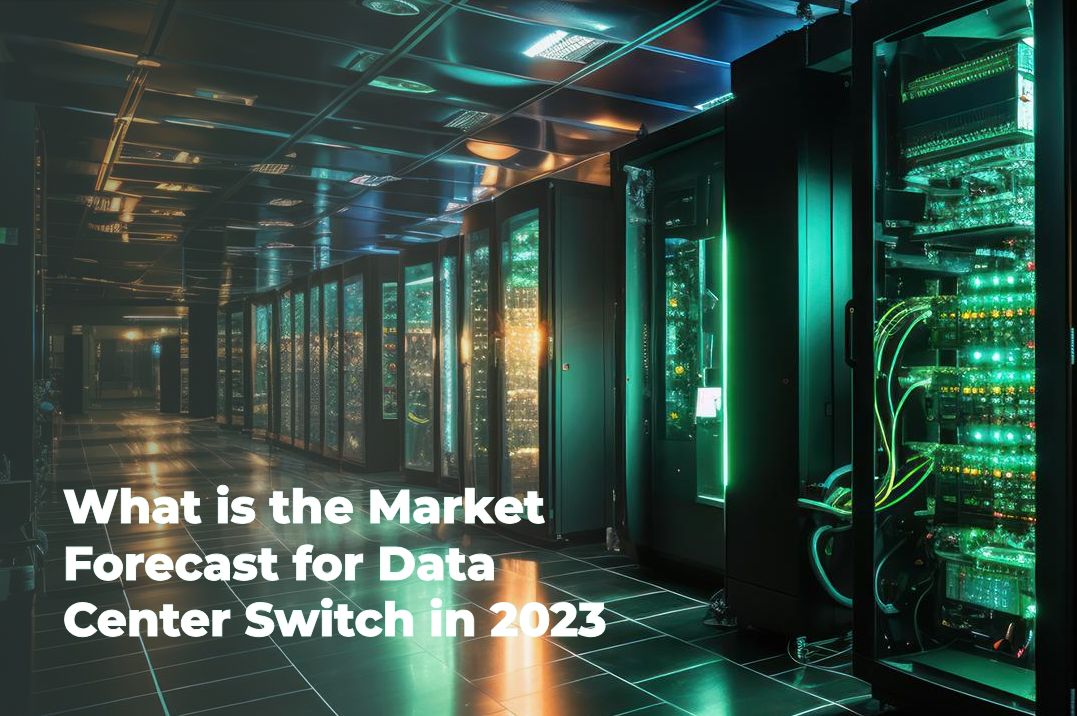Forecast for the Data Center Switch Market in 2023
This article presents the predictions of Sameh Boujelbene, an analyst at Dell’Oro Group, regarding the data center switch market in 2023.
Let’s begin by reviewing our previous predictions for 2022:
1. Data center switch market continuing thriving in 2022 if supply permits.
2. Service providers, excluding Google and Amazon, to accelerate the adoption of 200/400Gbps.
3. Google may adopt 800Gbps for the first time.
4. The diversity of silicon will become more apparent.
5. AI-driven workloads shaping data center network infrastructure.
About the first prediction, 2022 indeed proved to be a record-breaking year for data center switch sales as manufacturers demonstrated remarkable resilience in addressing supply challenges.
Regarding the second and third predictions, driven by continuous deployments by Google and Amazon, as well as accelerated adoption by Microsoft and Meta, shipments of 200/400Gbps nearly doubled in 2022. We also started reporting early deployments of 800Gbps by Google.
As for the fourth prediction, there is no doubt that supply constraints have expedited the demand for silicon diversity. New entrants to the commercial silicon market, such as Cisco, Intel (Barefoot), and Marvell (Innovium), have started securing orders from hyperscaler customers. Xsight Labs is another startup aiming to carve out a share of hyperscaler network spending.
Regarding the fifth prediction, we believe that we have only scratched the surface in terms of the innovation, disruption, and opportunities that AI workloads will bring to the market.
Now, as we enter 2023, most of the trends mentioned above will continue to be in focus as we further explore them. Additionally, I would like to emphasize other trends that were overshadowed in 2022 but we believe it’s time to regain their focus in 2023.
2023 will witness robust double-digit growth and record revenue.
Despite macroeconomic concerns and the challenging comparison to the previous year, data center switches are expected to achieve double-digit growth and reach unprecedented levels in 2023. Cloud segment, especially Hyperscaler, will drive this growth, while enterprise spending may slow down.
In addition to the spending differences among different customer segments, we also expect variations in market performance between the first and second halves of the year. In the first half of this year, we anticipate two factors driving revenue growth: the backlog from 2022 and an expected improvement in supply conditions, which will help fulfill the backlog orders. As for the second half of 2023, improvements in supply coupled with macroeconomic headwinds will break the panic buying behavior that has led to the outstanding growth rates observed in the market so far. Therefore, we expect orders to significantly slow down, followed by a deceleration in revenue as the majority of backlog orders are fulfilled in the first half of this year.
A. In 2023, shipments of 200/400Gbps are expected to double.
2023 will mark the third significant milestone in the adoption of 200/400Gbps. The first milestone was achieved when Google and Amazon adopted this technology as early as 2019/2020. The second milestone was reached with the deployments by Meta and Microsoft in 2021/2022. The third milestone is anticipated to be achieved in 2023 with the accelerated adoption by Chinese cloud service providers (SP) and other Tier 2/3 cloud SPs. The wider adoption of this technology by a broader range of customers, along with the ongoing deployments by hyperscalers, is expected to drive a near triple-digit growth in shipments of 200/400Gbps ports in 2023.
B. In 2023, service providers other than Google may begin deploying 800Gbps.
Google’s adoption of 800Gbps in 2022 was driven by the availability of switch systems based on 25.6T. With switch systems based on 51.2T expected to be commercially available (likely by the end of 2023), we anticipate other hyperscalers to adopt these switch systems in the form of 64-port (800Gbps port) configurations. However, this prediction depends on the time when bulk availability of 800Gbps optical devices is achieved.
C. SONiC is about to enter its golden age.
Over the past few years, we have witnessed increasing industry interest in the SONiC ecosystem. However, this interest has been hindered by ongoing challenges primarily related to supportability aspects. Compared to hyperscalers, Tier 2/3 cloud service providers and enterprises may have limited financial and engineering resources to manage projects like SONiC throughout their lifecycle.
At present, multiple existing players have proposed solutions to address the supportability issues, and with the further rise of new startups like Aviz Networks and Hedgehog, we expect the adoption rate of SONiC to increase in the coming years. We currently estimate that by 2026, nearly 10% of switches deployed in enterprise networks will be running SONiC.
D. AI-driven workloads will take center stage in customer spending and ecosystem investments.
This trend is not uncommon in 2023 and is expected to continue in the foreseeable future. Dell’Oro Group predicts that by 2026, half of server spending will be allocated to acceleration compute nodes for AI/ML applications. However, AI/ML workloads have a unique set of requirements in terms of latency, bandwidth, and power consumption, to name a few. We anticipate that AI/ML workloads will drive significant innovation across various domains: servers, storage, networking, and physical infrastructure. Meeting these demands will require innovation at both the system and component levels. These innovations will be pushed to the market by existing suppliers, but more importantly, by new entrants who are expected to secure significant funding. As industry analysts, we are excited to see what new products and network topologies will be introduced in 2023.

